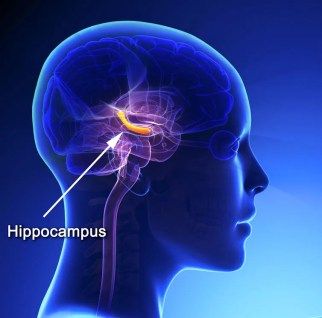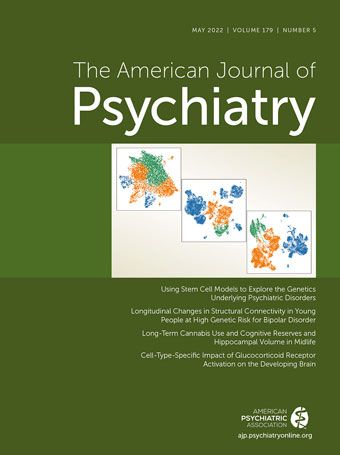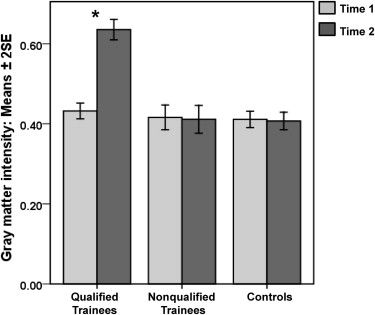How Your DNA Affects Your Response to Cannabis - The CYP2C9 Gene
Updated June 9th 2020
Quick Summary: A gene called CYP2C9 makes an enzyme that breaks down THC (the main psychoactive ingredient in cannabis). Variations in this gene can cause a 3-fold difference in your ability to metabolize THC. Studies have shown that this can cause differences in how long-lasting and intense the effects of pot are for different people.
Also, your CYP2C9 variant may help predict how long you have to wait to pass a drug test after consuming cannabis, with certain genetic variants only needing a few days to clear the relevant molecule from their system and others needing up to 30 days.
Mapping the Human Genome: A Personalized Wellness Revolution
The landscape of medicine and wellness is quietly undergoing a radical transformation. Since we mapped the human genome in 2003, tens of thousands of studies, in different ways, are pointing to the same conclusion:Each human being's metabolism is unique. Generic dietary advice or using the same medical interventions for everybody just doesn't match up with the countless differences observed between people's individual biochemistry and metabolism.
In this article, you'll learn how the principles of nutrigenetics and pharmacogenetics can help you understand your high, help you understand your body, and even help you pass a drug test.
CYP2C9: Destroyer of THC
CYP2C9 is a gene that contains instructions for building an enzyme also called CYP2C9. It is made by the liver and the GI tract. It is part of the Cytochrome P-450 family of enzymes.Besides having one the coolest names around, the Cytochrome P-450 family of enzymes are all phase I detoxification molecules. This means they are responsible for the "first pass" of breaking down, or metabolizing, different substances. Cytochrome P-450 enzymes break down everything from prescription drugs to inhaled smoke to hormones like estrogen that our body produces on its own.
The chemical structure of the CYP2C9 enzyme is the perfect match for the chemical structure of THC, the main psychoactive molecule in marijuana. Because of this, as THC circulates throughout the body, when it comes in contact with CYP2C9, CYP2C9 chemically transforms THC into other molecules. When a substance is changed like this, the resulting molecule is called a metabolite.
The graphic below shows the chemical transformation catalyzed by CYP2C9. As you can see, it is a two-step process to break it down to the non-psychoactive metabolite, THC-COOH. You don't need to worry about any of the chemical structure to understand this well, just know that CYP2C9 converts THC to THC-COOH.
Based on this image alone, you might imagine that more or less functional CYP2C9 in your body might also change the amount of THC in your body after smoking.
Genetic Polymorphisms: What makes you, you.
So, as you might have guessed already, we don't all have the same "version" of the CYP2C9 gene. Just like you have variations in your genes that cause your eyes to be blue or brown, you have variations in the CYP2C9 gene that create your own unique metabolism. These variations are called Single Nucleotide Polymorphisms, or SNPs for short. If you'd like to read more in-depth about SNPs, check out this article I wrote. For the purposes of this article, just know the following:- SNPs are the commonly occurring variations in your genes. They are not mutations.
- SNPs are identified with an "rs" number. For example, rs1057910 tells us exactly where that SNP is located in your DNA.
- A SNP means that one letter of your DNA sequence varies from person to person.
- Your allele type tells us which version of the SNP you have and is written with two letters, such as AA, AT, or TT.
In the above example, the "C" allele in example 1 is replaced with a "T" allele in example two. This is a SNP.
It's fairly well-known that the cytochrome P-450 class of enzymes contain many SNPs, or variations, that change the function of each enzyme. For example, certain SNPs in the CYP2D6 gene are known to cause poor reactions to SSRI antidepressant drugs. And, a SNP in the CYP1A2 gene has a major effect on how long it takes to break down caffeine. This same SNP is also related to a 4-fold risk of high blood pressure and heart attack from excess caffeine consumption. Pretty significant stuff, right?
So, scientists thought it would be a good idea to test whether or not any SNPs in the CYP2C9 gene change the way we break down THC.
What the Studies Show
The first study on the pharmacogenetics (fancy word for how your genes impact your drug metabolism) of THC and CYP2C9 was done in 2005. (Link here)This initial study was done with the enzymes in a petri dish, not in human subjects. However, they found that the CYP2C9*3 version of the enzyme (produced by C allele carriers) metabolized 30% less THC than the CYP2C9*1 version of the enzyme (produced by A allele carriers).
If this seems confusing, just know that in the initial petri dish study, one version of the enzyme was found to be 30% less effective at breaking down THC than the other. Since this was not done on human subjects, the question was raised: Will this translate to having an effect in the human body?
CYP2C9 In Human Subjects
A clinical study was done in 2009 which answered that question with a fairly definitive "yes". 43 healthy volunteers were given 15 mg of oral THC and levels of THC and it's metabolites 11-OH-THC and THC-COOH were measured over time. Additionally, their subjective response was reported. While this was a small study, its results were strongly significant.It turns out that for each C allele someone carries, the less efficient the CYP2C9 enzyme becomes at breaking down THC.
So, CC carriers had on average THREE times more active THC in their system than AA carriers. AC carriers had roughly 2 times the THC of AA carriers.
You can see this in the graph below in the first column on the left.
Here's another way of visualizing it looking at blood levels of THC over time:
Furthermore, because THC is converted into THC-COOH by the same enzyme, CC carriers had on average only 15% of the inactive metabolite in their system compared to AA carriers. You can see that pretty clearly in the farthest box on the right in that first chart above. Now, this gets really interesting because THC-COOH is the metabolite most urine drug tests are looking for to register whether or not someone has been smoking pot recently. More on that later.
CYP2C9 and Your High: The Subjective Effects
CC carriers reported more drowsiness and a longer effect from ingesting THC as shown by the graph below. Participants in the study reported their subjective experience over the course of 3 days. And, interestingly enough, CC variants showed a significant increase in drowsiness 72 hours later.Since this study was done using orally consumed cannabis, its important to note the differences between smoking and eating edibles. When eating THC, the breakdown process starts in the gut, so CYPC29 starts doing it's job before you even get high. So, it effects both how high you get, and how long it lasts. When smoked, CYP2C9 has less effect on how high you get right off the bat, but still has the same impact on how long the effects last.
There are so many potential further areas of inquiry. Different methods of smoking combined with CYP2C9 variants. CYP2C9 variants combined with other genes. The list goes on, and hopefully a more relaxed research climate around cannabis in the coming years will yield other interesting and useful studies.
CYP2C9 and Drug Tests
Contrary to popular belief, THC does not stay in your system for very long. Drug tests are looking for the THC-COOH metabolite, because it generally hangs around the body for about 30 days... UNLESS you have the CC variant of CYP2C9. Because so little THC gets converted into THC-COOH, there's hardly enough of it to register on a urine test to begin with. It appears that after just a few days, CC carriers could pass a urine test as opposed to the 30 days it takes AA carriers.Note how little THC-COOH is present in CC carriers. THC-COOH is stored in fat, so there is much less to store to begin with and detoxify overall.
You might be asking, "if this study was done in 2009, why haven't I heard of it?" Well, the cost to get your DNA sequenced by 23andMe in 2009 was over $1000, making it much less accessible than it is now. Having this information just wasn't relevant to most people.
Note that I used to recommend 23andMe but DO NOT anymore due to their privacy policy and sale of their user's data for research. Additionally, they've changed their data set and it no longer contains certain key variants for wellness. Instead, I use the Apeiron Genomics Test and have created a proprietary endocannabinoid test that looks at 50+ variants. Contact me if you'd like to order it or sign up for the upcoming training if you're a practitioner looking to provide this type of information for your clients.
How Can I learn What CYP2C9 Variant I have?
If you have your 23andMe done, you can look up your CYP2C9 variant by going to the tools -> raw data section of your 23andMe login page. Then, copy and paste this into the search bar: rs1057910Then, it will tell you your variant: AA, AC, or CC
Here's a quick summary of the different variants:
AA - Most efficient CYP2C9 enzyme. Breaks down THC most fully and rapidly. Likely to experience the least amount of drowsiness from pot. Gets less high from edibles, high from smoking or edibles shorter in duration.
AC - Intermediate between AA and CC
CC - Least efficient CYP2C9 enzyme. Does not break down THC as completely. Likely to experience the most amount of drowsiness from pot. Gets WAY more high from edibles, high from smoking or edibles longer in duration.
Personally, I'm an AC.
What Else Does CYP2C9 Do?
THC is far from the only thing that CYP2C9 is responsible for. Blood thinning medications like warfarin and non-steroidal anti-inflammatory drugs like ibuprofen are some of the other substances it helps break down. In fact, poor metabolizer variants of CYP2C9 have been shown to heighten the risk of intestinal bleeding from using ibuprofen. (Link Here) It's a pretty handy thing to know beyond just cannabis consumption.Is this the only factor that influences how I feel about getting high?
To this, I answer a a very clear “NO”. This is just one of the many factors that influence your response to cannabis. While this study is significant, it is only the very beginning of understanding the complex dynamics at play. For example, there are other SNPs in the same gene that might further influence how efficient your CYP2C9 is. Note that in the graphs above, there is still some variation between carriers of the same variant. Hopefully this will be explored by further genetic studies.The breakdown of THC is only one small piece of how your body responds to cannabis.
For example a SNP...
- In the FAAH gene effect levels of craving after stopping smoking and greater or less neurological reward response to cannabis.
- In the COMT gene affects how impaired your short-term memory is after smoking herb. One variant scored 40% better on average than the other on cognitive testing.
- In SLC66A seems to effect better or worse decision-making skills after consuming THC, and in combination with COMT is a predictor of better or worse executive function.
- In PENK gene is associated with likelihood for cannabis dependence.
- And SNPs in the ATK1, CNR1, and ABCB1 genes are associated with higher or lower likelihood for negative or psychosis-like symptoms after consuming cannabis. (Hey, I get it, the first time I hit a vaporizer I thought I was going to die)
(If anyone is interested in having their genes analyzed, there is a link in the article to the author. Just follow title link and scroll to the bottom of the article.)



